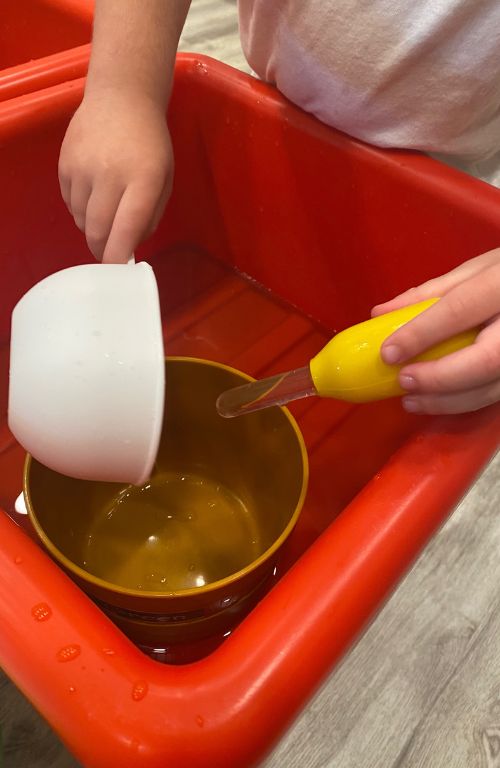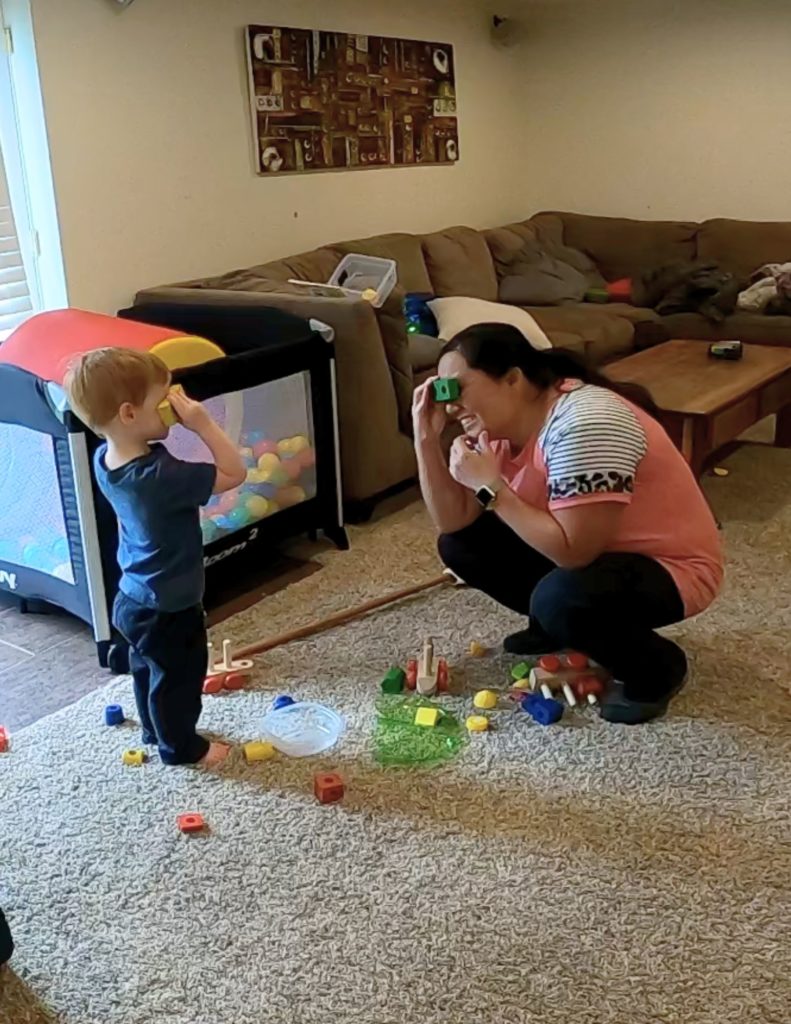When an autistic child is young, one of the challenges may be finding ways to help your child engage in play for more than 5 minutes. It can be difficult to teach a child when they only pay attention for short amounts of time. So the question is how do you help a child increase attention and engagement?
Observe
The first thing I do when I’m working with a new child is I just observe. Now, I get that this is your child and you know your child better than anyone, but this is still a good exercise. Take 15-20 minutes to just watch your child without telling them what to do or making them stop what they’re doing (unless it’s a safety issue).
Then ask yourself some of these questions
- What are they doing?
- What are they getting out of it?
- What do you think their intent is?
- What things made their affect change? Meaning, did anything make them smile or get excited? Did anything make them sad or angry? Can you tell what your child enjoyed and didn’t enjoy from their facial expressions?
- Were there any patterns you saw as your child played?
Parallel Play
Parallel play is when kids play next to each other with like materials. What I want you to do is to play next to your child with like materials. First, get your own materials, try not to take them away from your child if they’re playing with something already.
Imitate what your child is doing. If your child is pacing from room to room. Pace with your child. If your child is collecting toys, collect your own toys. If your child is pushing buttons on a toy, do it too.

Your goal here is not to teach or direct at this point. You’re going for attention and engagement, and the way you’re going to get that is by doing what your child enjoys doing. If your child doesn’t talk, then you can figure it out by watching and then following.
Add On To Your Child's Play
If you’re wanting to increase attention, you want to start with things you already know that your child likes. Your child is more likely to increase attention on things he enjoys doing more than on things you’re making him do.
Sometimes kids have one thing they like to do over and over. If you find that thing, then try to figure out your child’s intent. Why are they doing that one thing? What about it do they enjoy? Then try to add on to it.
For example, let’s say your child loves to play in water. He likes to scoop and poor the water over and over. You can add to it without changing the intent of the activity. If the activity is scooping and pouring, you want to allow your child to continue that part and change other parts of it to increase interest and attention. Here are some ideas.
- Find different things to pour with. Different sized cups, different colored cups, spoons, squirt bottles, etc.
- Change the color of the water
- Change what you’re scooping and pouring. Use rice, sand, waterbeds, beans, cereal, noodles, etc.
- Change where you’re doing the activity. Do it inside, outside, in the bathtub, in a water table, on the counter, in the sink, etc.

5 Things You Can Do When You Can't Get Your Child To Engage In Play
Enter your name and e-mail to receive your 5 Tips To Improve Engagement along with more strategies and techniques to help you increase learning and growth.

Leave The Activity Accessible
If you have an activity out that you think your child will enjoy, don’t put it away when you think your child isn’t interested. Sometimes kids just need to do it in their own time rather than when someone tells them to do it. There are a lot of reasons why a child might not participate in an activity at first.
- they might be occupied with something else
- they might need time to adapt to the idea of it
- they might not be in the mood, but may be later
- they might need extra time to process what it is you’re supposed to do
Leave the activity out, and when your child starts to explore with it, give them time before joining them. Sometimes they may come for a brief moment then leave, and then come back again. This is how you build that attention. If you put it away right away, your child will lose some opportunities to explore later.
Use Sensory Motor Play
If you have a child that enjoys sensory motor play, then that is a great place to start with increasing attention and engagement. A lot of times you will see a child’s affect (facial expressions) change as they engage in sensory motor play. There are also a lot of simple ways to change things up as you go little by little. Here are some examples of sensory motor play.
- running
- jumping
- spinning
- squishing with pillows
- wrestling
- crashing into things like the couch
- big hugs

If you can tell your child is enjoying it, and your child is indicating that he wants more, then keep doing it. When I’m working with a kid that doesn’t engage for very long, it is usually sensory motor play where I get the connection and I’m able to play for longer and longer amounts of time.
It's Ok To Take A Break
I usually encourage parents to try in 10-15 minute increments, then take a break. If your child has a difficult time engaging in play, he likely will need the breaks to go back to comfort zone activities, and that’s ok. Don’t give up if you’re not getting immediate interaction, that’s not generally how it works. It takes time, patience, and creativity.
If you’re still having a hard time and need more ideas, check out the 5 Tips To Improve Attention and Engagement below where I share a couple more ideas.




